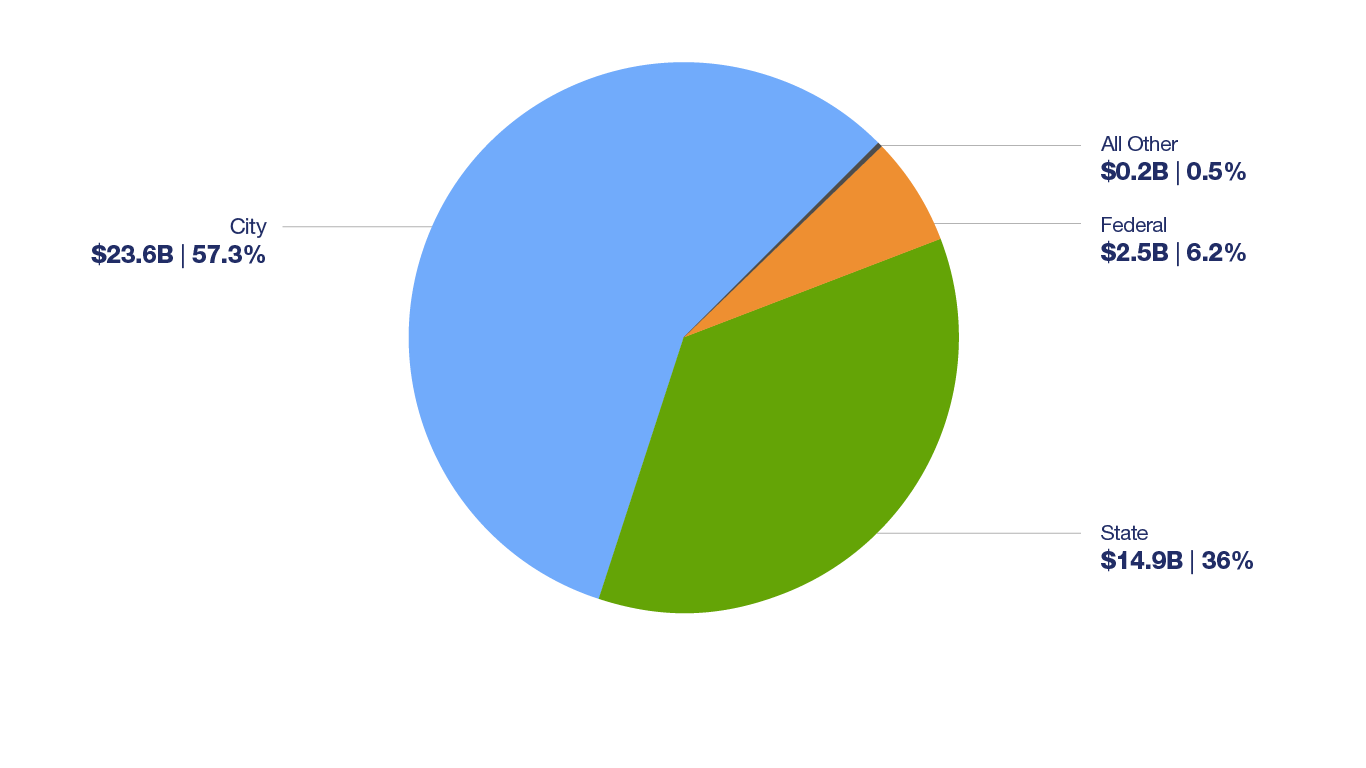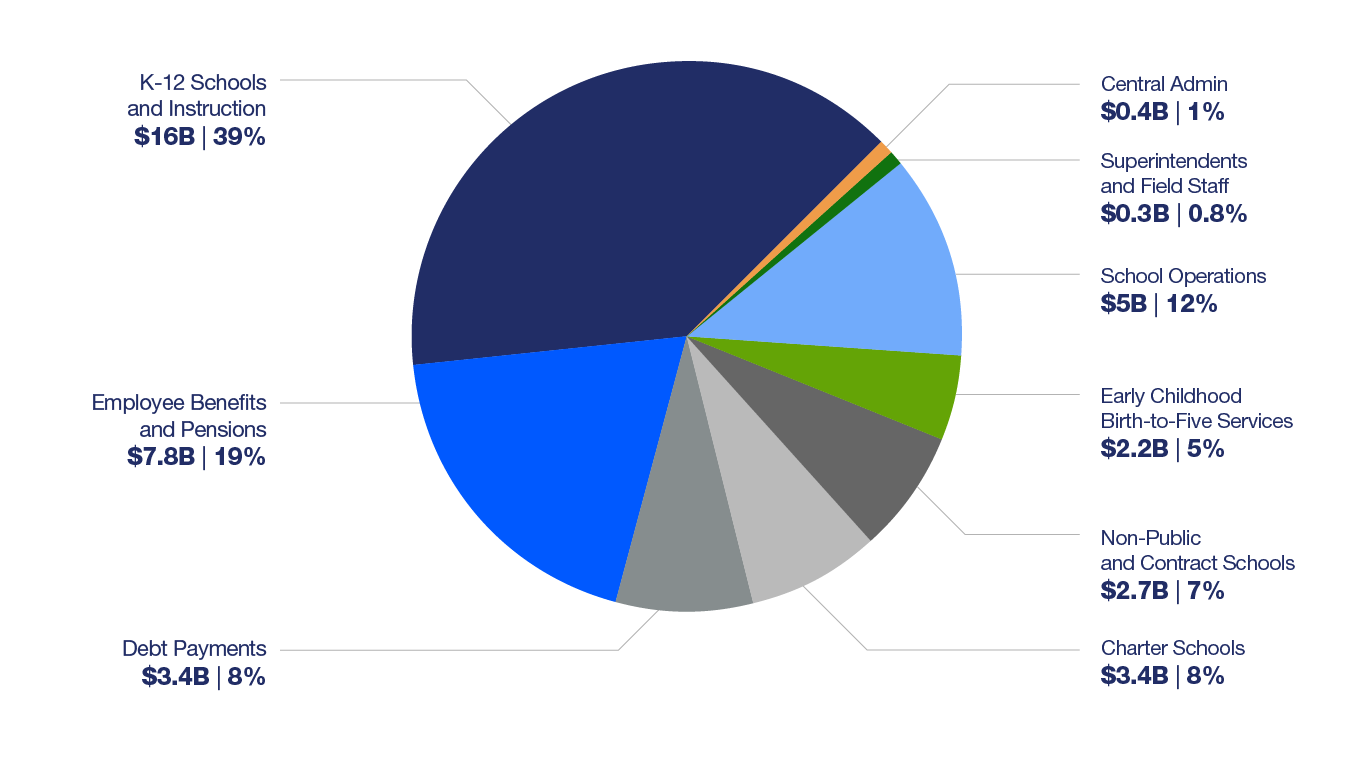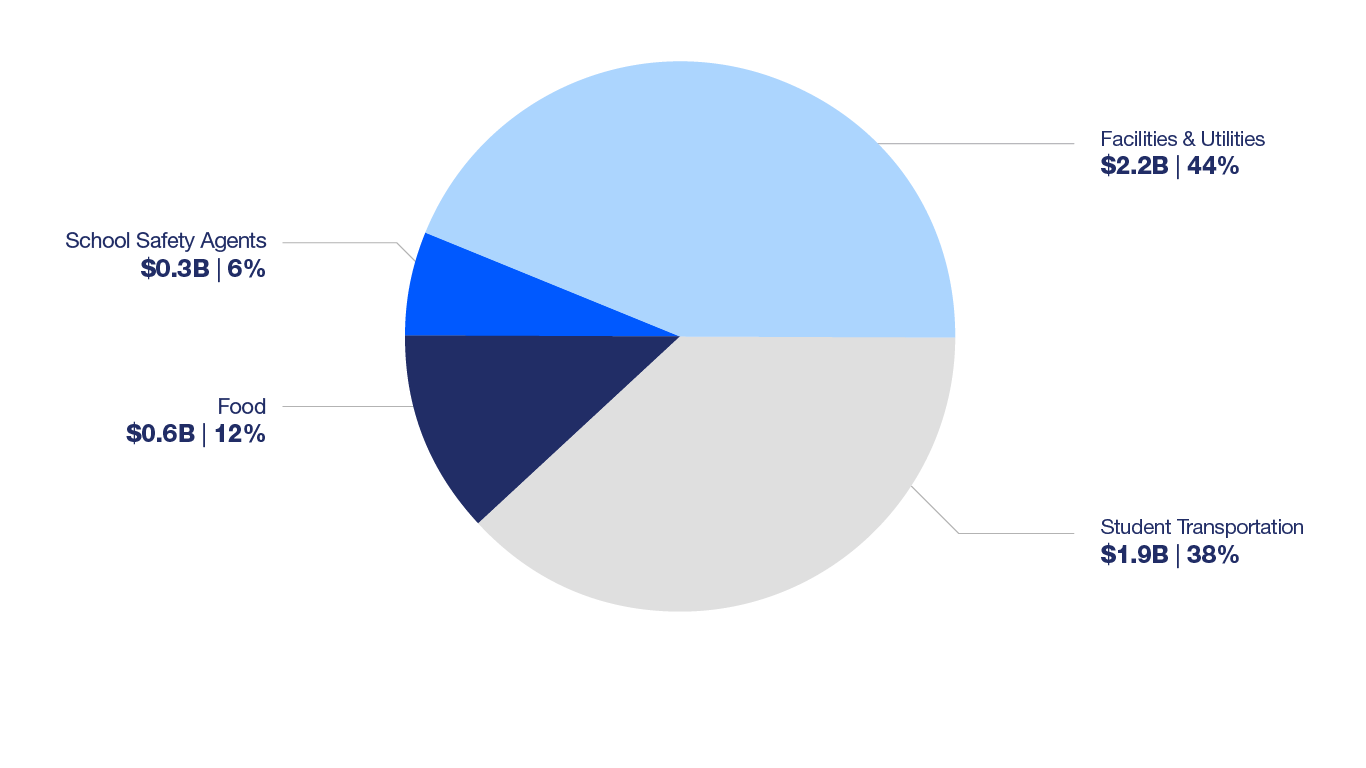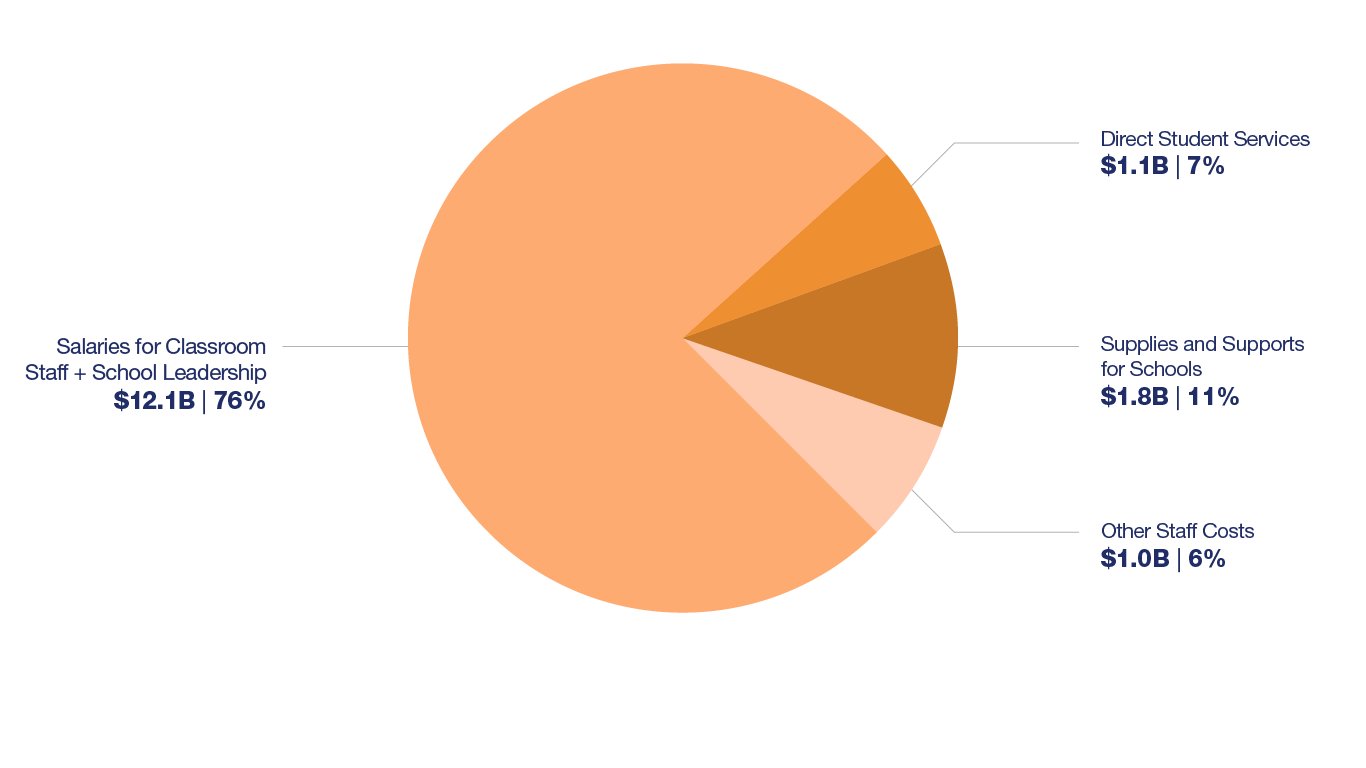NYC Public Schools Budget
For the 2024-2025 school year (Fiscal Year 2025), our total budget is $41.2 billion.
Where Does Our Funding Come From?
Funding generally comes from income and corporate taxes, property taxes, and sales taxes.

- 57.3% comes from New York City ($23.6B)
- 36% comes from the New York State ($14.9B)
- 6.2% comes from Federal funding ($2.5B)
- The remainder (0.5%, or approximately $0.2B) comes from private or other sources
How Is NYC Public Schools’ Budget Spent?
NYC Public Schools' 41.2 billion budget is spent as follows:

$23.9 billion (58%) goes to:
- 16 billion - K–12 schools & instruction
- $5 billion - School operations
- $2.2 billion - Early Childhood Birth-to-Five services
- $335 million or 0.8% - Superintendents and field offices
- $400 million or 1% - Central administrative offices
$17.3 billion (42%) goes to:
- $7.8 billion - Employee benefits & pension
- $3.4 billion - Debt payments
- $3.4 billion - State-mandated payments to charter schools
- $2.7 billion - Non-public & contract schools per Special Education mandate
A Closer Look at Our Operations Budget
What Does Our $5 Billion School Operations Budget Support?

- $2.2 billion - Facilities & Utilities. Across our system, there are over 137,000,000 square feet of space cleaned, maintained, and receiving utilities such as water and electrical service.
- $1.9 billion - Student Transportation. This includes operation of roughly 9,000 bus routes, serving 150,000 students across the city and beyond.
- $600 million - Food. NYCPS serves 900,000 meals daily, with free breakfast, lunch, and snacks available to all students.
- $300 million - School Safety Agents. The safety of students and staff is our top priority, supported by 3,613 school safety agents across our schools.
Much of this funding goes to support our workers: over 8,000 food workers, over 8,700 bus drivers, 7,200 bus attendants, and approximately 800 custodian engineers.
A Closer Look at Our Schools & Instructional Budget
What Does the $16 Billion K–12 School & Instructional Budget Support?

- $12.1 billion - Salaries for Classroom Staff and School Leadership, accounting for 75,000 teachers; 5,300 principals, assistant principals, and deans; 5,300 social workers/school counselors; 3,000 school secretaries; 21,500 paraprofessionals; and about 1,800 other staff
- $1.8 billion - Supplies and Supports for Schools, including textbooks, professional development, curricula, and computers used by students and staff across our schools
- $1.1 billion - Direct Student Services, provided by over 400 Community Schools, approximately 450 Pathways and other Career and Technical Education programs, and 250 Project Pivot programs. Summer Rising crosses categories and will support 110,000 students with academic instruction and Community Based Organization enrichment
- $1.0 billion - Other Staff Costs, accounting for 7,500 school aides, 3000 therapists, 2,800 parent coordinators/community coordinators, and 1,000 other staff across our schools
*These
numbers have been rounded
How Has Our Budget Changed Over Recent Years?
Increases in State and City funds fuel growth in Per Student Spending, compensating for loss of Federal Stimulus funds from previous years.
Please note that per-student spending only includes students at NYC Public Schools facilities; per State guidelines, this figure excludes debt service, transportation, and food costs.
| Fiscal Year (FY) | Stimulus Budget | Total DOE Budget | Per-Student
Spending |
|---|
| FY 2019 | N/A | $33.6B | $25,810 |
| FY 2020 | N/A | $34.5B | $26,236 |
| FY 2021 | $0.9B | $34.5B | $27,046 |
| FY 2022 | $2.8B | $37.7B | $31,259 |
| FY 2023 | $2.0B | $37.6B | $30,738 |
| FY 2024 | $2.0B | $39.9B | $31,717 |
| FY 2025 | $0 | $40.0B | $32,284 |
*Updated as of September 2024
Capital Budget
New York City Public Schools leverages capital funding to build new schools, renovate existing schools and purchase equipment, which is managed and administered by the NYC School Construction Authority.
School Budgets
Financial Reporting
FY 2025 School Budget At a Glance
New York City Public Schools has launched the FY2025 School Budget At a Glance(Open external link) report (SchoolBAG) which displays a school’s total funding per student as compared to the citywide average. The report summarizes school funding, spending, and demographics and provides a glossary, FAQ and a link to funding details for reference. This report will support families' understanding of their school’s budget and serve as a resource for budget-related questions.
We publish several school based financial reports and other reports required by law. You can access all these financial reports on our InfoHub.
Fair Student Funding
Fair
Student Funding (FSF) is the main source of money for most schools. With input
from the School Leadership Team, principals decide how to spend these funds to
meet basic educational needs.
FSF is based on the number of students enrolled at each school and the needs of those students. This budgeting method is called a weighted pupil-funding model. You can find more information on our FSF page.
In July, 2022 the
Chancellor convened a Working Group to develop recommendations for potential changes
to Fair Student Funding. You can find more information on the Fair Student Funding Working Group on our Infohub.
School Allocation Memoranda (SAMs)
Schools receive notifications about all direct allocations including FSF by means of School Allocation Memoranda (SAMs). SAMs explain the specific purposes of each source of funds.
You can find SAMs on our Infohub. The written description in each SAM provides:
- purpose of the funds
- background about the funds
- source of the funds
- how the funds should be used